{Somerset, England}
I love traveling by train, but trains don’t get you everywhere. Even in a country as compact as England, there are times when a car comes in handy.
(And just as an aside - do we all realize how small England really is? Just over 50,000 square miles. That’s less square mileage than 31 U.S. states. It’s little. Little but fierce, as Shakespeare would say.)
And this is why I find myself in front of a car rental shop, in Bath, sitting in a little Vauxhall (a new-to-me brand of car), that has the steering wheel on the right and the shift on the left for the first time ever. I’ve just arrived in England after traveling for 24 hours straight, I have no phone service, and it is pouring down rain. I don’t think I have too far to drive to get to the town where I’ll be staying for the next month…from what I can tell on the map it should take about half an hour or so. The kind man behind the counter types the location into the GPS for me - assuming I know how to use it, which I don’t - and sends me on my way with a friendly “Good luck!”. I can tell by the look on his face that he thinks I’ll need it.
I only get a block away when the engine starts to smoke, ever so slightly. I think about turning around to return the car, and then realize that I’m so concerned about staying on the left and trying to follow the GPS that I’ve completely forgotten that I need to shift.
Here’s the thing that I wasn’t expecting about driving in England: driving on the left is the easy part, once you get used to where you are spatially on the road (I lost count of how many left-side curbs I bounced off of on that first day). It’s the other stuff that takes some getting used to. Like endless, endless roundabouts. And hedgerows around which it is impossible to see. And lambs on the loose. And narrow roads. Especially narrow roads.
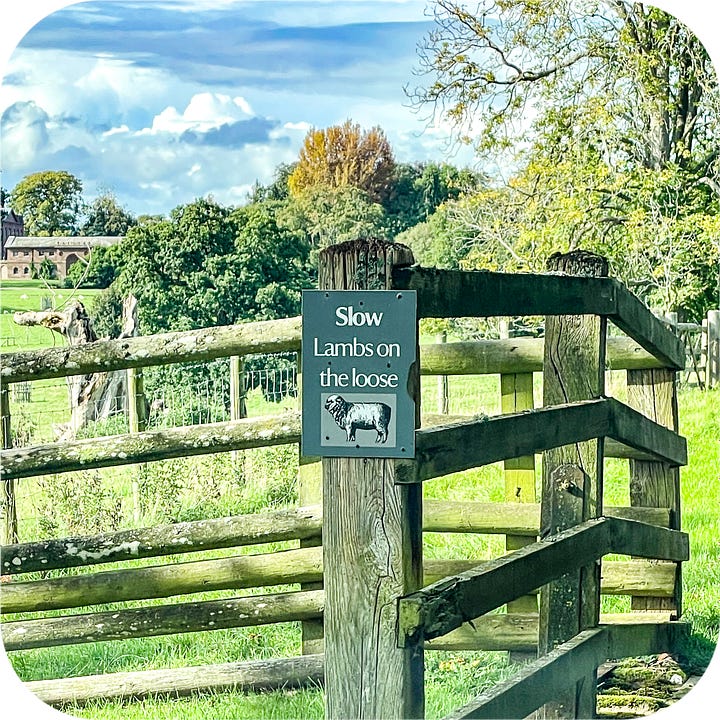
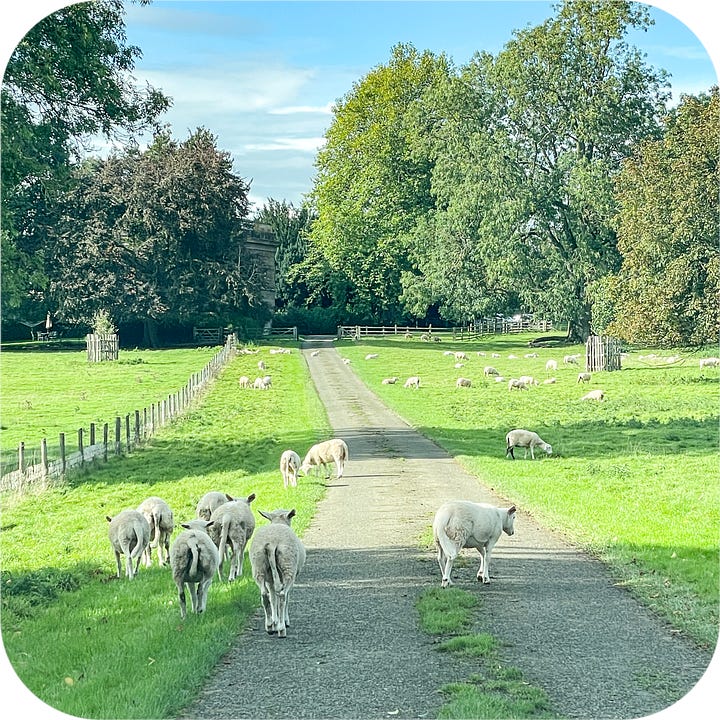
Driving in the U.K. requires hyper-vigilance because you never know when the road is going to be so narrow that you have to pull over to let a car that is traveling the other way go by. Like, honestly, this happens all day long. Sometimes, you have to reverse back out of a street, because there is nowhere to pull over. It’s a little bit terrifying.
The only place I really feel comfortable is on highways, which are called motorways here. The GPS keeps asking me if I’d like to avoid motorways on my route, and I think to myself “WHY IN GOD’S NAME WOULD I WANT TO DO THAT??”. Ask me if I want to avoid roads that are less than six feet across. That’s an option I’d like to have.
Anyway, I get used to it after a while. I even start to like driving in England. The countryside wouldn’t be so breathtakingly lovely if all of the roads were widened. And hedgerows are truly my single favorite thing about the country. But it does take substantially longer to go any distance at all than it does in the United States. Still, I laugh a little when I tell my neighbor that I’m planning to drive to Somerset for the day to visit Glastonbury, and she replies, “Ooh, aren’t you brave!”.
It’s about sixty miles from where I’m staying.
Glastonbury is a city that is, of course, steeped in Arthurian myth. King Arthur’s remains were reportedly discovered at Glastonbury Abbey, and legend holds that the Holy Grail is buried nearby, beneath Glastonbury Tor, the nearby hill that dominates the landscape.
What is a Tor, you ask? Like everything in Glastonbury, it’s not such a simple answer. Geographically speaking, a tor is a rocky outcropping. In Old English, torr meant tower - and was used to describe a towering hill. Glastonbury Tor in particular is an isolated, tower-like rocky hill, that happens to have a man-made tower, St. Michael’s Tower, at its summit. Despite appearances, Glastonbury Tor is an entirely natural feature of the landscape.
Here’s a 17th-century engraving of the town of Glastonbury with the Tor looming over it:
Look at the engraving above, and imagine that a very long time ago, most of the flat land surrounding the Tor was a marshy swampland - mostly underwater. Picture the Tor rising from the water like an island and you can begin to imagine why the Tor has been associated with the Isle of Avalon - the mythical resting place of King Arthur - for almost a thousand years.
I park my car and start to explore the town. It’s not long before I discover that there are two types of people in Glastonbury: those who don’t really take the Arthurian legends very seriously, and those who do.
“You’re in Avalon, you know.”
The man behind the counter in the coffee shop, it seems, is one of the latter. Glastonbury is famously a center of New Age culture - some say it is where New Age culture was invented. It’s not really why I’m visiting, and I don’t spend very much time on Glastonbury’s high street, because 1) I’m not in the market for crystals or incense and 2) I have a ticket to tour the ruins of Glastonbury Abbey and my time slot is rapidly approaching.
The ruins of abbeys and monasteries are an all too familiar sight in England. They dot the countryside and scar towns, a mournful reminder of King Henry VIII’s destruction. The ruins of Glastonbury Abbey may be the most haunting of them all. Glastonbury is the cradle of Christianity in England - purportedly the location of the first Christian church on English soil. When Glastonbury Abbey was dissolved it was the largest and grandest abbey in England - and the reputed burial site of King Arthur and Guinevere.
Honestly, there are more myths, legends and stories in Glastonbury than there are crystals on the High Street. Luckily, we have a tour guide dressed as a friar to provide background information, and to walk us through the site.
“Jesus was in Glastonbury, you know.”
Jesus was in England?
“He came with his uncle, who was here on a business trip.”
Wait, what?
I may not be an expert on the Bible, but I don’t remember hearing about any business trips. Could this story be true? Or is it just a myth? I think we need to interrupt our guide for a second and talk about the Matter of Britain.
The Matter of Britain refers to the collection of Medieval myths and literature that comprise the legendary history of the British Isles. “The legendary history”…it’s a difficult concept for an American to wrap their brain around, because the history of our country is so short, and so well-documented. But there are large periods of English history that are, for lack of a better word, just conjecture. The Arthurian legends, for example, play a major role in the Matter of Britain.
One of the lesser figures is Joseph of Arimathea, a wealthy Jewish merchant who was a follower of Jesus, and who took responsibility for burying his body after the Crucifixion. Because he undertook this very important job, some believe he must have been related to Jesus. Joseph’s trade was tin, and in his role as tin merchant, it is possible that he traveled to Somerset and nearby Cornwall - an area historically rich in tin.
So, there are two legends relating to Joseph of Arimathea - the first is that he was the uncle of Jesus, and that he brought his nephew to Glastonbury. This is the legend that our robed guide repeats, and the legend that William Blake’s famous Jerusalem is based on.
And the second legend is that he came to Glastonbury sometime after Jesus’s death, in possession of the Holy Grail. While he was here he did two things that would become central to the Matter of Britain:
He brought Christianity to Britain, and founded the first Christian church on English soil - on the spot where the ruins of Glastonbury Abbey stand today, and…
He misplaced the Holy Grail.
The quest for the Holy Grail, as we all know, was central to Arthurian legend. It may have brought King Arthur to Glastonbury. Our tour guide stops us in front of a sign, that reads:
“SITE OF THE ANCIENT GRAVEYARD WHERE IN 1191 THE MONKS DUG TO FIND THE TOMBS OF ARTHUR AND GUINEVERE.”
He tells us that in 1191, monks from the Abbey found a hollow log buried, and inside of it were two bodies - one of which had locks of long, golden hair still attached. With it, a lead cross inscribed with the words “Here lies buried the renowned King Arthur in the Isle of Avalon.” One of the monks reached for the body of Guinevere, but upon his touch her golden locks turned to dust.
Coincidentally, he adds, the existing Abbey had burned to the ground in 1184, and the monks were in search of funds to build a new, grander Abbey. It certainly couldn’t hurt the pilgrim trade to have the tomb of King Arthur on Abbey grounds.
The truth is that we don’t know if King Arthur really existed. The thing about all of the legends surrounding Glastonbury is that there are three options, really: that none of them are true, that all of them are true, or that there is little truth and a lot of myth in each of them.
Our guide leads us to another sign:
“SITE OF KING ARTHUR’S TOMB. IN THE YEAR 1191 THE BODIES OF KING ARTHUR AND HIS QUEEN WERE SAID TO HAVE BEEN FOUND ON THE SOUTH SIDE OF THE LADY CHAPEL. ON 19 APRIL 1278 THEIR REMAINS WERE REMOVED IN THE PRESENCE OF KING EDWARD I AND QUEEN ELEANOR TO A BLACK MARBLE TOMB ON THIS SITE. THIS TOMB SURVIVED UNTIL THE DISSOLUTION OF THE ABBEY IN 1539.”
We know this for sure: the great Glastonbury Abbey was dissolved under Henry VIII. Destruction began in 1539, our guide tells us, and the stones from the Abbey’s towering walls were used to pave the road to nearby Wells, the city where the last Abbot of Glastonbury was tried for treason by order of Henry VIII’s chief minister Thomas Cromwell. The elderly Richard Whiting - by all accounts a fair and pious man, was found guilty and taken to Glastonbury Tor, where he was beheaded, drawn and quartered. His head was placed on a spike near the door of his Abbey, and the four quarters of his body were sent to the nearby towns of Bath, Wells, Bridgewater and Ilchester…a horrifying warning.
Myths and legends have swirled around Glastonbury for close to a thousand years, and for close to a thousand years the people of Glastonbury have embraced those myths, and supported themselves on them.
I think about all of the stores selling crystals, and grails and mugs that say “What Would Arthur Do?” on the high street. And I think about the man in the coffee shop who reminded me that I was in Avalon. I had laughed to myself when he said it, but suddenly I’m on his side. You know what? Good for them.
XO





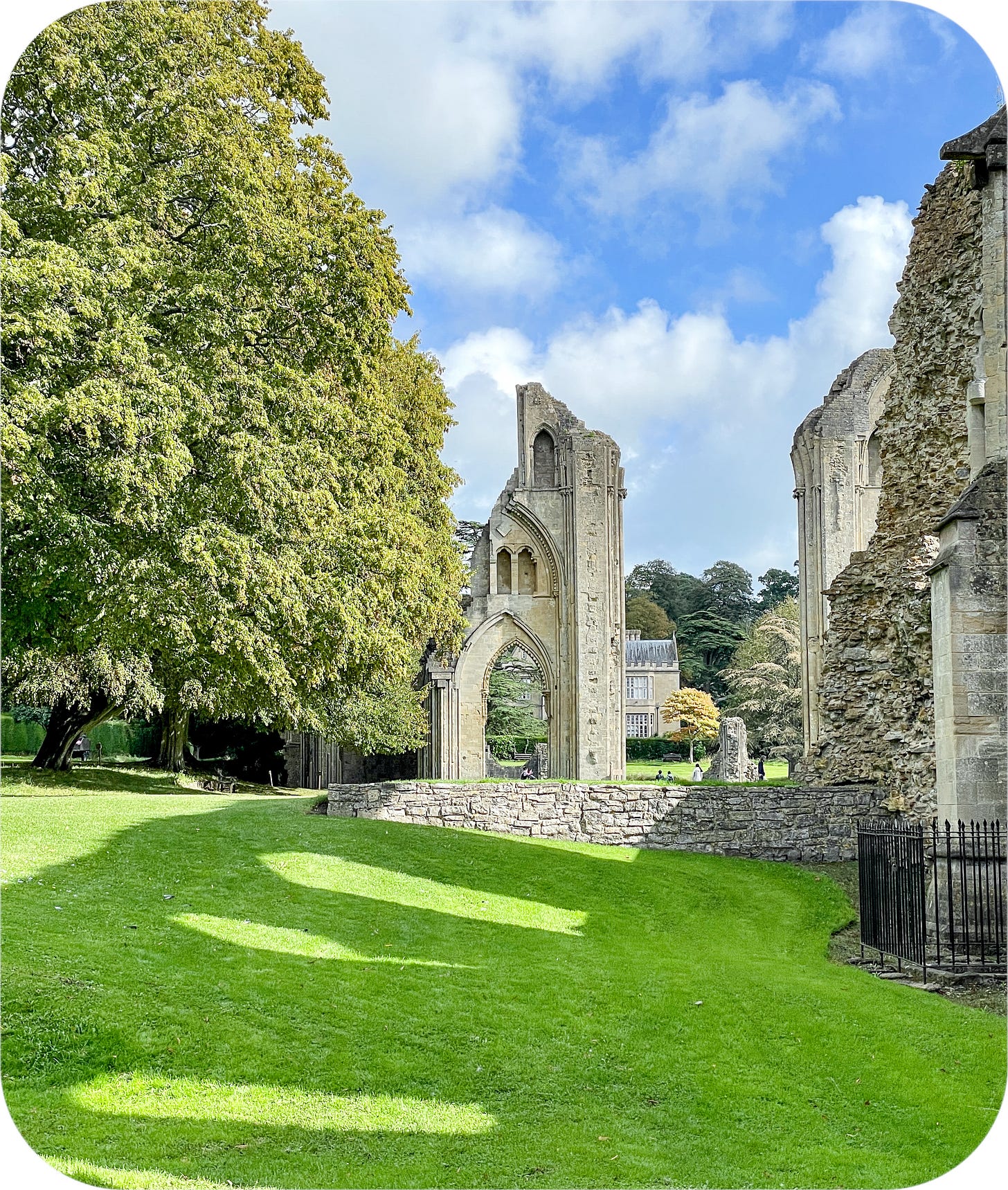

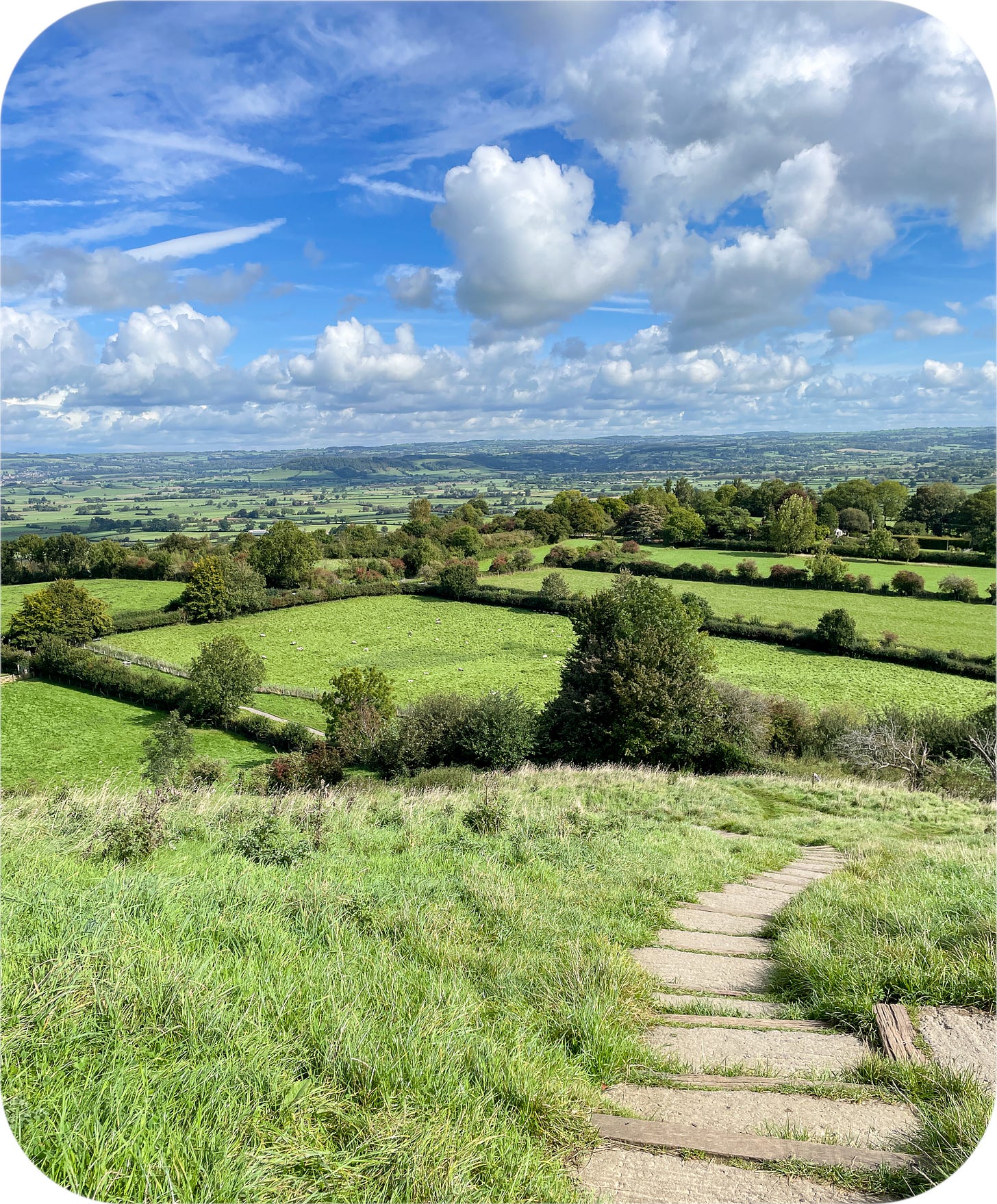
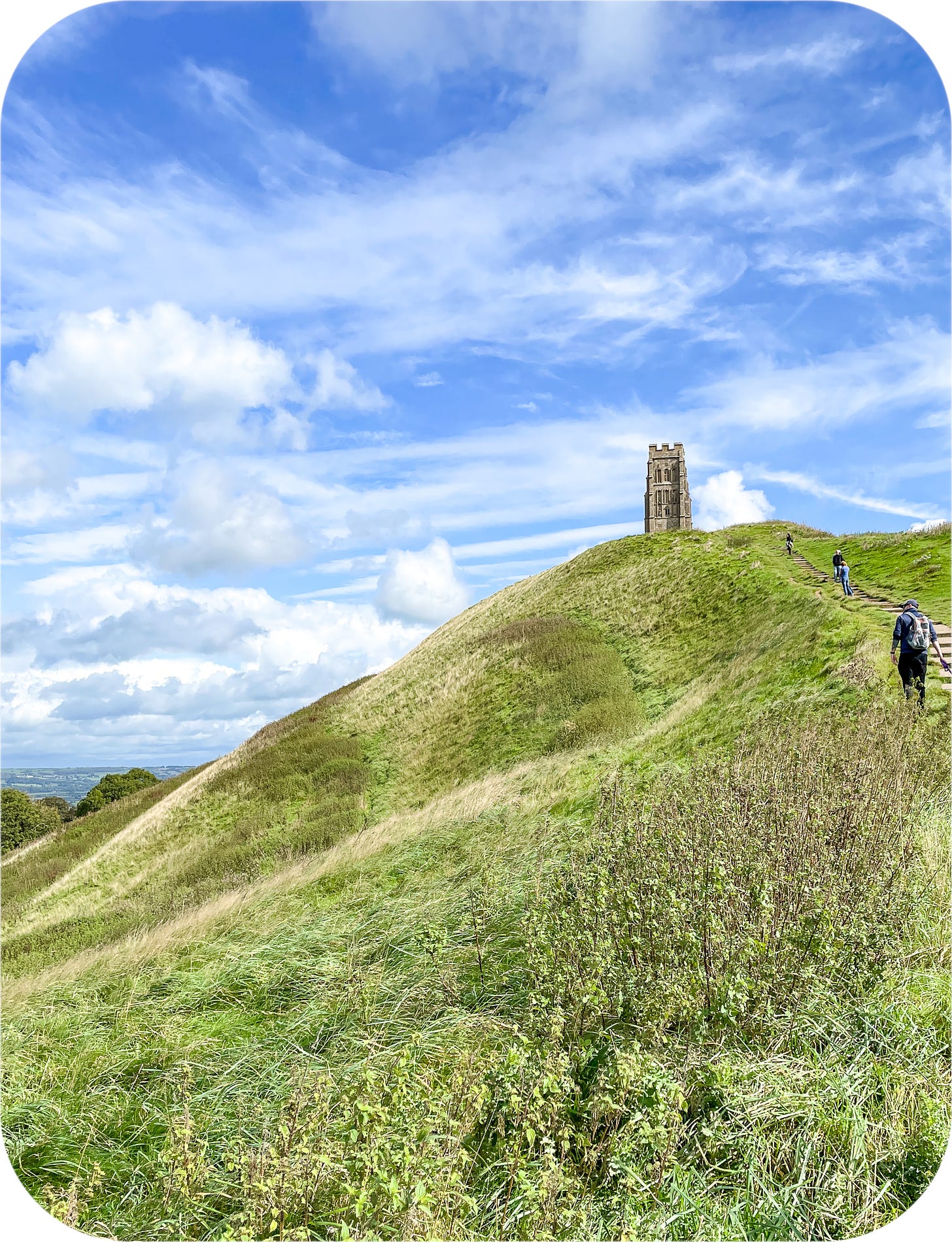
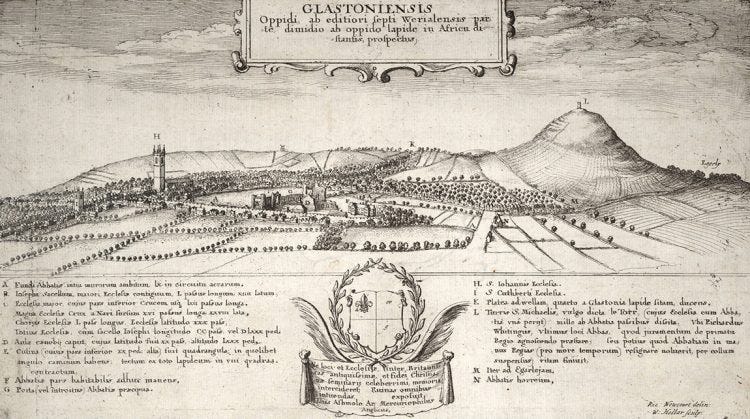

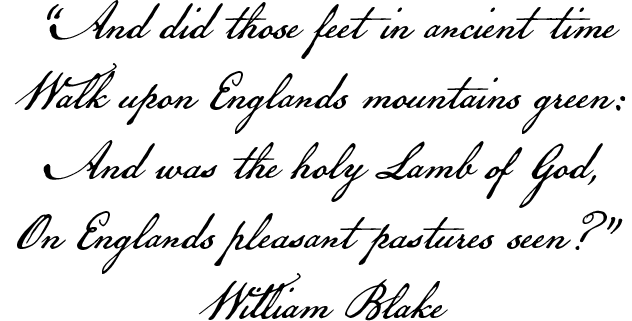
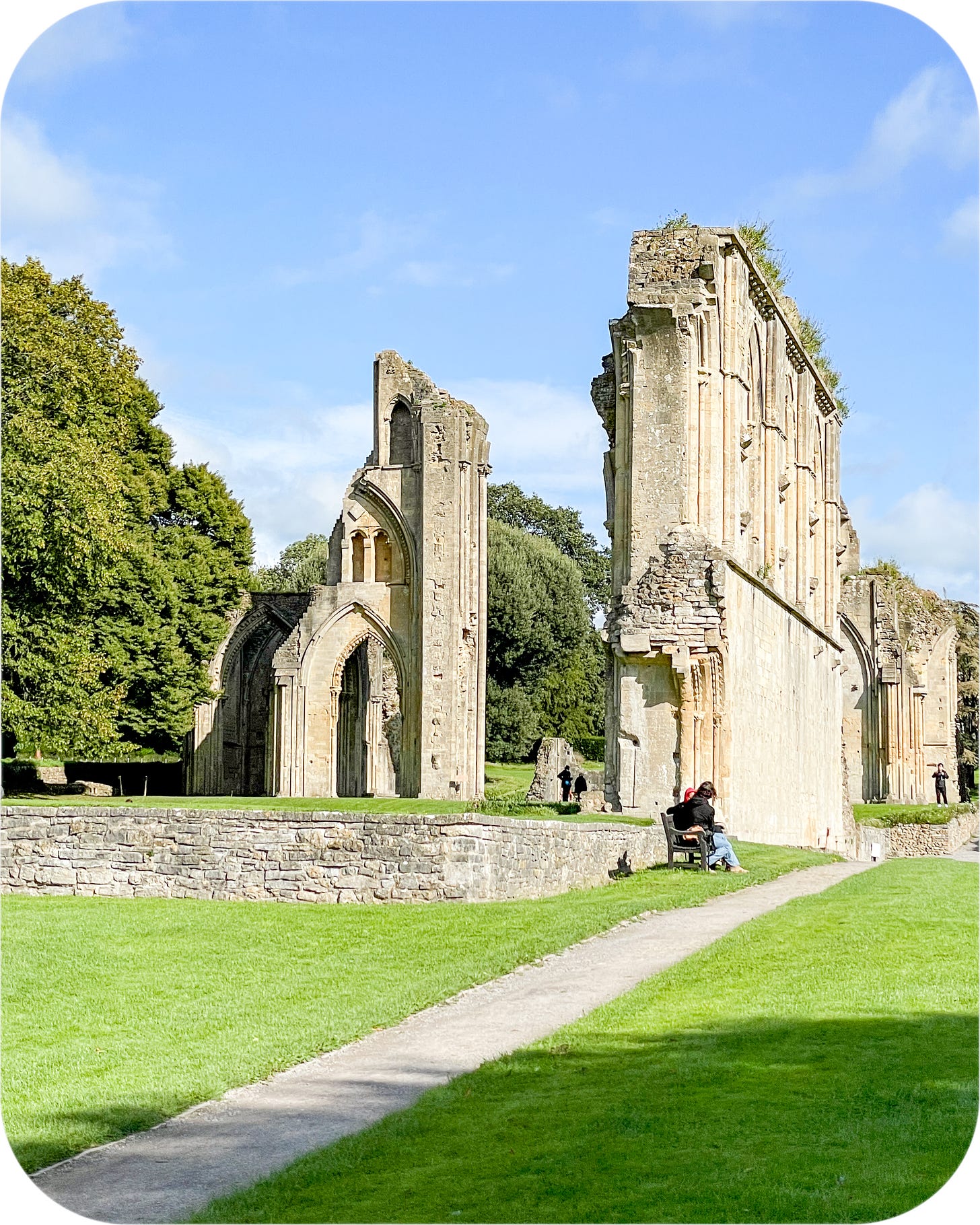
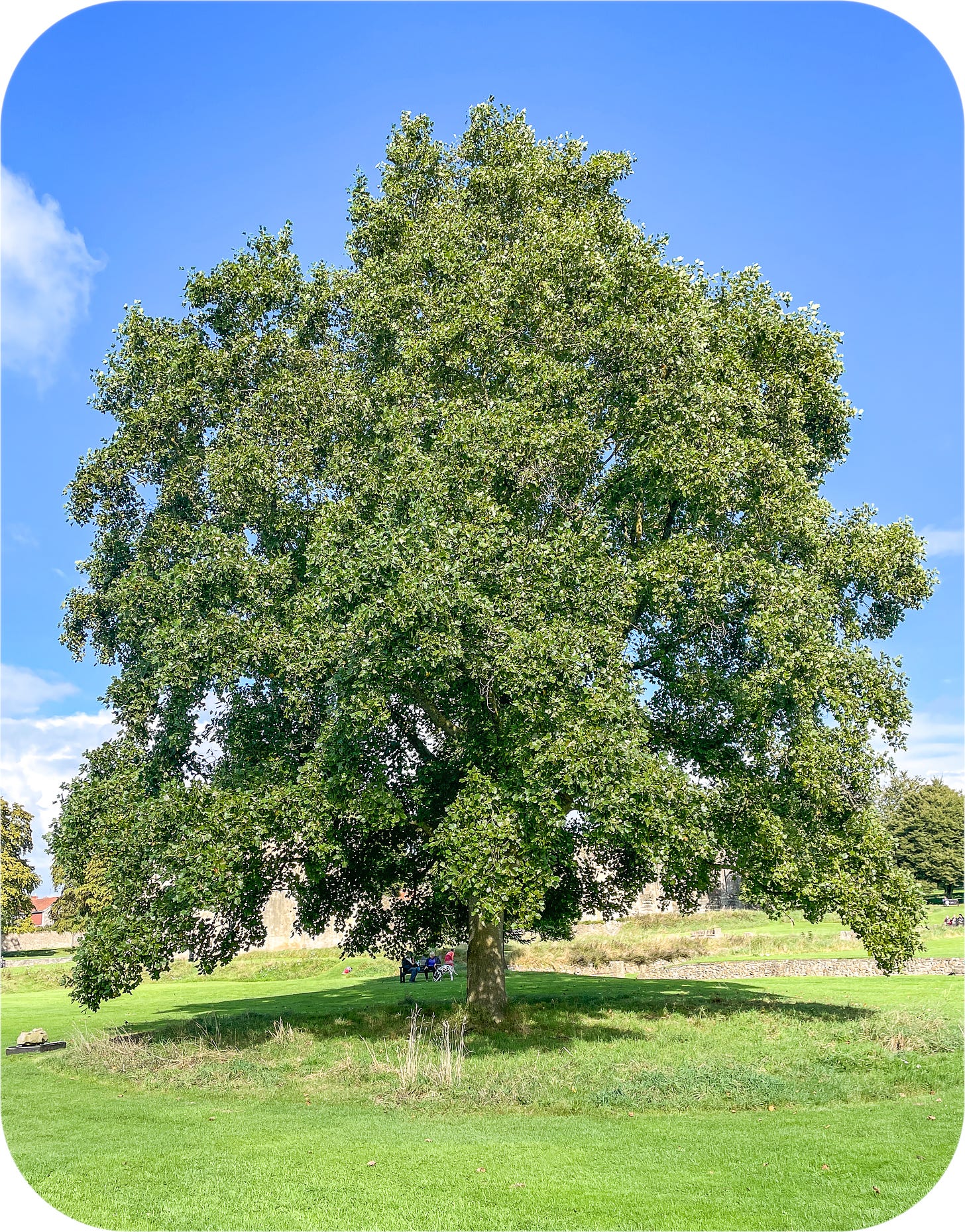
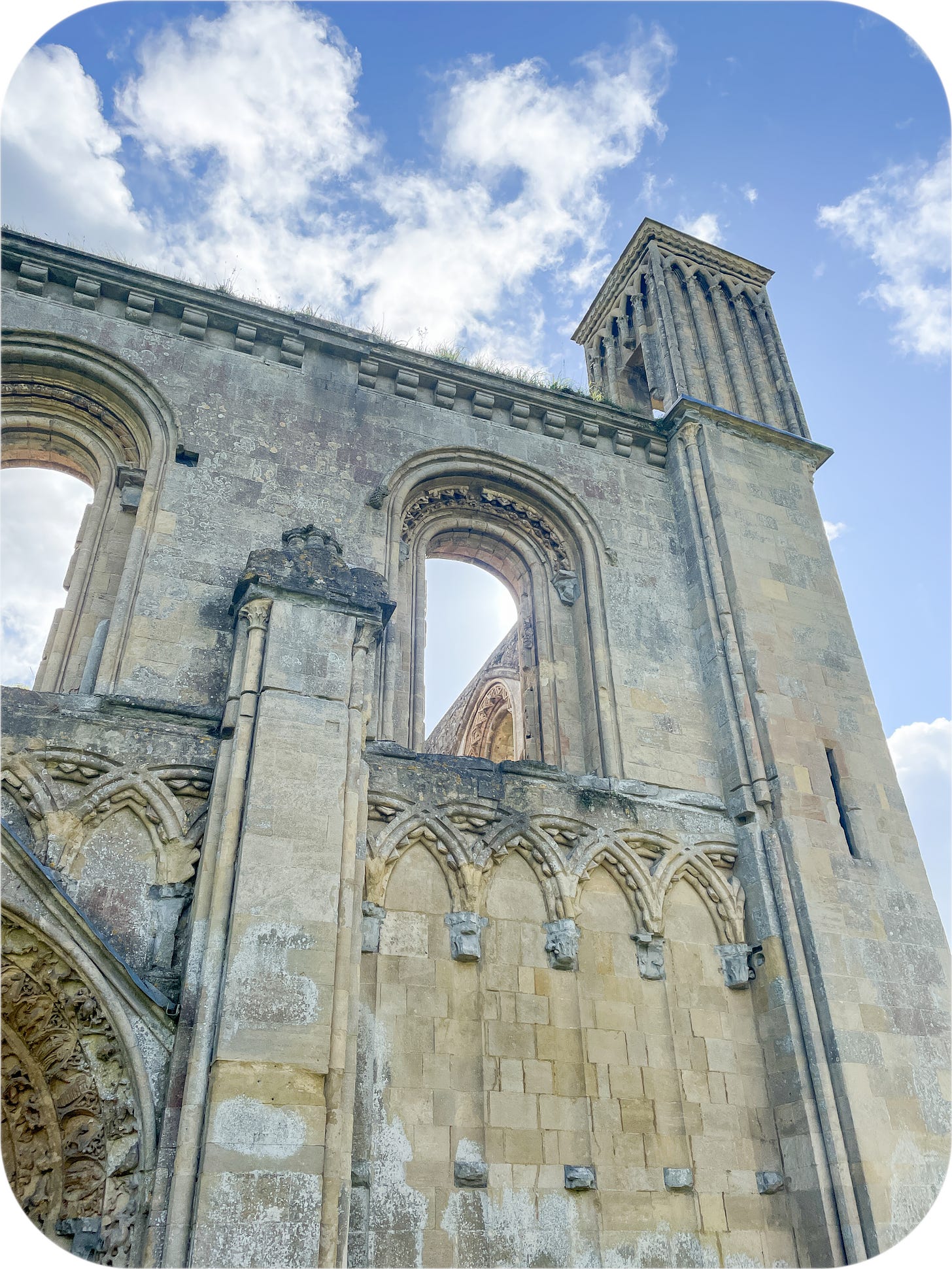
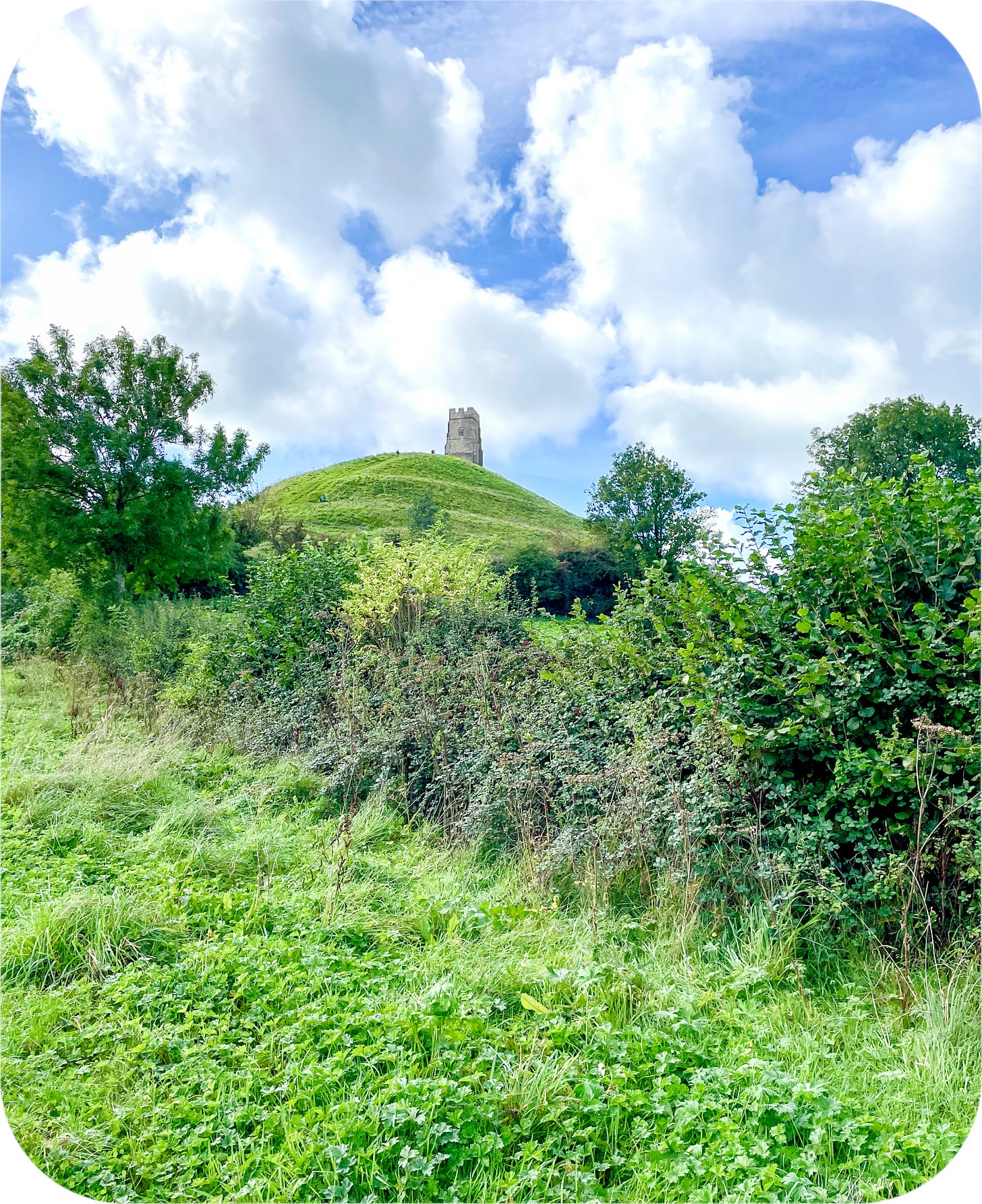

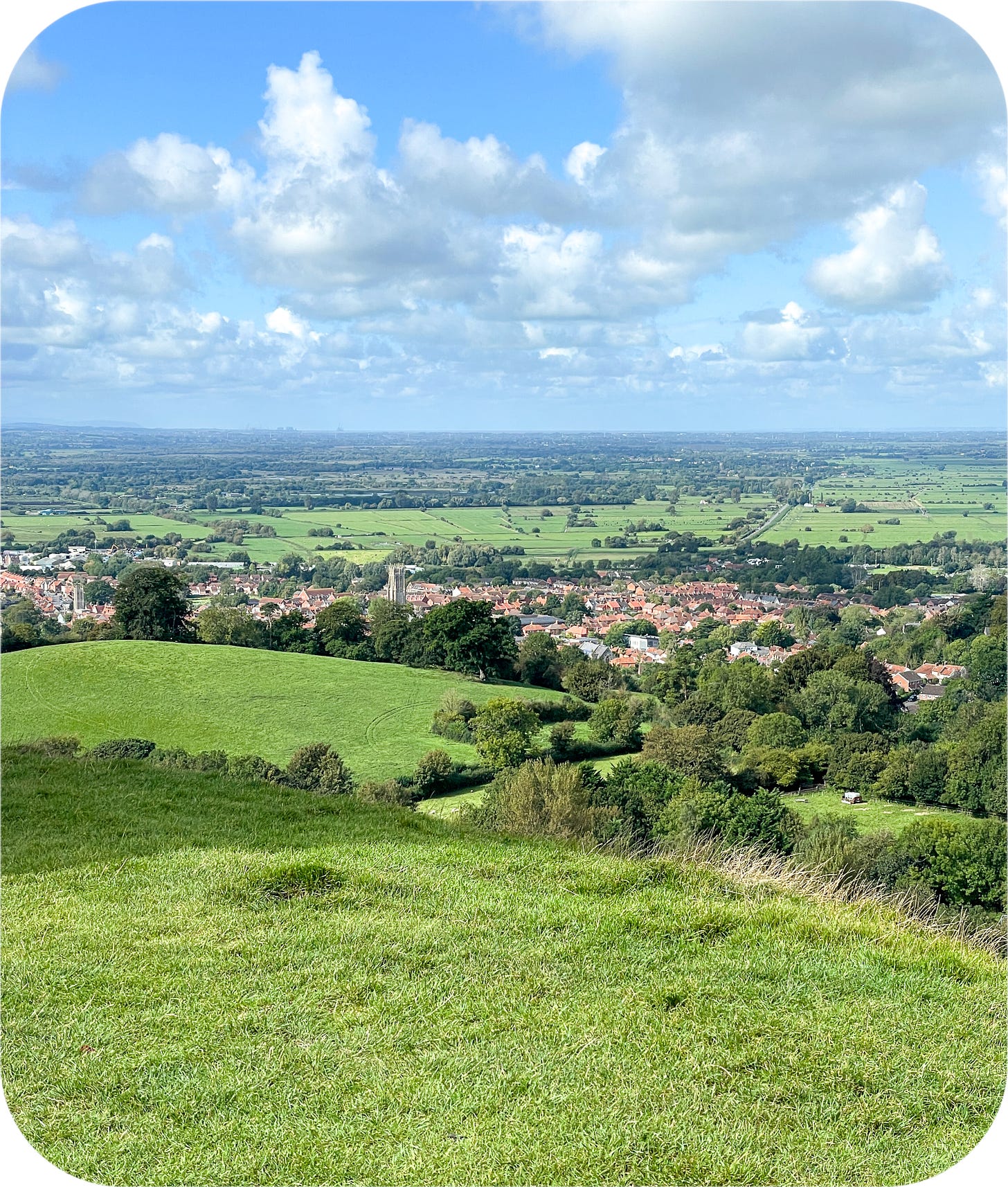

I have driven once in SW England and don't want to subject the good people of the UK to my driving ever again. The narrow roads, hedgerows that nearly took off my side mirror, and large trucks coming from the opposite direction sent my blood pressure skyrocketing. : )
Wonderful post and pictures. I loved my visit to the Abbey in 2022 (by tour bus!) Such a beautiful and atmospheric place.
Beautifully done and thanks for the spotlight on our glorious hedgerows, quite proud of them we are. Lovely photographs and looks like you caught a good day for it, unusual for England if I do say so myself.